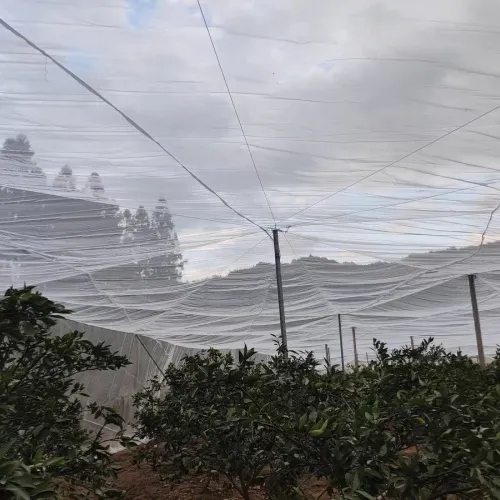-
 Afrikaans
Afrikaans -
 Albanian
Albanian -
 Amharic
Amharic -
 Arabic
Arabic -
 Armenian
Armenian -
 Azerbaijani
Azerbaijani -
 Basque
Basque -
 Belarusian
Belarusian -
 Bengali
Bengali -
 Bosnian
Bosnian -
 Bulgarian
Bulgarian -
 Catalan
Catalan -
 Cebuano
Cebuano -
 China
China -
 Corsican
Corsican -
 Croatian
Croatian -
 Czech
Czech -
 Danish
Danish -
 Dutch
Dutch -
 English
English -
 Esperanto
Esperanto -
 Estonian
Estonian -
 Finnish
Finnish -
 French
French -
 Frisian
Frisian -
 Galician
Galician -
 Georgian
Georgian -
 German
German -
 Greek
Greek -
 Gujarati
Gujarati -
 Haitian Creole
Haitian Creole -
 hausa
hausa -
 hawaiian
hawaiian -
 Hebrew
Hebrew -
 Hindi
Hindi -
 Miao
Miao -
 Hungarian
Hungarian -
 Icelandic
Icelandic -
 igbo
igbo -
 Indonesian
Indonesian -
 irish
irish -
 Italian
Italian -
 Japanese
Japanese -
 Javanese
Javanese -
 Kannada
Kannada -
 kazakh
kazakh -
 Khmer
Khmer -
 Rwandese
Rwandese -
 Korean
Korean -
 Kurdish
Kurdish -
 Kyrgyz
Kyrgyz -
 Lao
Lao -
 Latin
Latin -
 Latvian
Latvian -
 Lithuanian
Lithuanian -
 Luxembourgish
Luxembourgish -
 Macedonian
Macedonian -
 Malgashi
Malgashi -
 Malay
Malay -
 Malayalam
Malayalam -
 Maltese
Maltese -
 Maori
Maori -
 Marathi
Marathi -
 Mongolian
Mongolian -
 Myanmar
Myanmar -
 Nepali
Nepali -
 Norwegian
Norwegian -
 Norwegian
Norwegian -
 Occitan
Occitan -
 Pashto
Pashto -
 Persian
Persian -
 Polish
Polish -
 Portuguese
Portuguese -
 Punjabi
Punjabi -
 Romanian
Romanian -
 Russian
Russian -
 Samoan
Samoan -
 Scottish Gaelic
Scottish Gaelic -
 Serbian
Serbian -
 Sesotho
Sesotho -
 Shona
Shona -
 Sindhi
Sindhi -
 Sinhala
Sinhala -
 Slovak
Slovak -
 Slovenian
Slovenian -
 Somali
Somali -
 Spanish
Spanish -
 Sundanese
Sundanese -
 Swahili
Swahili -
 Swedish
Swedish -
 Tagalog
Tagalog -
 Tajik
Tajik -
 Tamil
Tamil -
 Tatar
Tatar -
 Telugu
Telugu -
 Thai
Thai -
 Turkish
Turkish -
 Turkmen
Turkmen -
 Ukrainian
Ukrainian -
 Urdu
Urdu -
 Uighur
Uighur -
 Uzbek
Uzbek -
 Vietnamese
Vietnamese -
 Welsh
Welsh -
 Bantu
Bantu -
 Yiddish
Yiddish -
 Yoruba
Yoruba -
 Zulu
Zulu
Feb . 11, 2025 16:55
Back to list
dust protection net
Dust protection nets are an essential component in various industries, providing a reliable solution for managing and minimizing environmental impacts caused by dust emissions. As a seasoned expert in environmental safety and industrial hygiene, I understand the critical role these nets play in maintaining regulatory compliance and promoting sustainable operations.
One of the primary advantages of dust protection nets is their cost-effectiveness over the long term. While the initial investment might seem considerable, the reduction in dust-related damages to equipment and the decreased need for frequent cleaning can lead to substantial savings. Furthermore, by preventing violations of environmental regulations, companies can avoid costly fines and potential legal disputes. To ensure maximum efficacy, proper installation is crucial. An improperly installed net might fail to cover critical areas, leading to partial protection and reduced effectiveness in dust containment. Therefore, working with experienced professionals who can assess your site and recommend tailored solutions is advisable. Trust in dust protection nets is built on a solid foundation of research and field applications. Numerous case studies have shown quantifiable reductions in airborne dust levels in areas where these nets are utilized. Testimonials from industry leaders who have successfully integrated dust nets into their operations further attest to their reliability and effectiveness. In conclusion, dust protection nets are an indispensable tool for industries looking to mitigate environmental impacts, comply with regulations, and protect public health. Their strategic installation and maintenance can drive operational efficiencies and cost savings, establishing your business as a leader in environmental stewardship. By proactively addressing dust emissions, companies can not only enhance workplace safety but also contribute positively to the broader community and environmental preservation efforts.


One of the primary advantages of dust protection nets is their cost-effectiveness over the long term. While the initial investment might seem considerable, the reduction in dust-related damages to equipment and the decreased need for frequent cleaning can lead to substantial savings. Furthermore, by preventing violations of environmental regulations, companies can avoid costly fines and potential legal disputes. To ensure maximum efficacy, proper installation is crucial. An improperly installed net might fail to cover critical areas, leading to partial protection and reduced effectiveness in dust containment. Therefore, working with experienced professionals who can assess your site and recommend tailored solutions is advisable. Trust in dust protection nets is built on a solid foundation of research and field applications. Numerous case studies have shown quantifiable reductions in airborne dust levels in areas where these nets are utilized. Testimonials from industry leaders who have successfully integrated dust nets into their operations further attest to their reliability and effectiveness. In conclusion, dust protection nets are an indispensable tool for industries looking to mitigate environmental impacts, comply with regulations, and protect public health. Their strategic installation and maintenance can drive operational efficiencies and cost savings, establishing your business as a leader in environmental stewardship. By proactively addressing dust emissions, companies can not only enhance workplace safety but also contribute positively to the broader community and environmental preservation efforts.
Latest news
-
Shipping Plastic Bags for Every NeedNewsJul.24,2025
-
Safety Netting: Your Shield in ConstructionNewsJul.24,2025
-
Plastic Mesh Netting for Everyday UseNewsJul.24,2025
-
Nylon Netting for Every UseNewsJul.24,2025
-
Mesh Breeder Box for Fish TanksNewsJul.24,2025
-
Expanded Steel Mesh Offers Durable VersatilityNewsJul.24,2025











